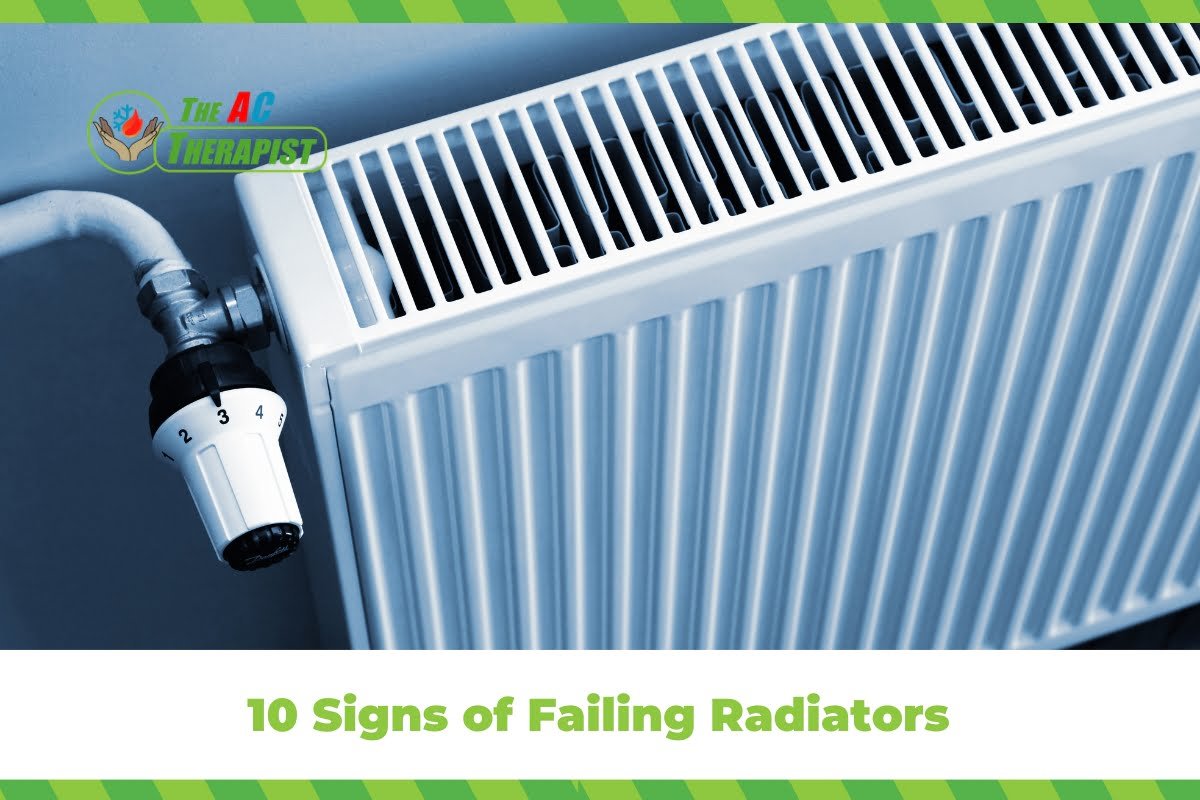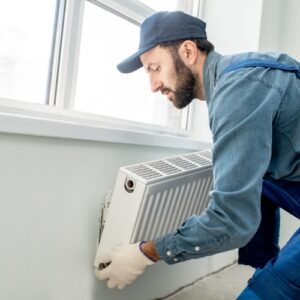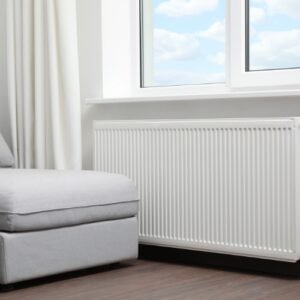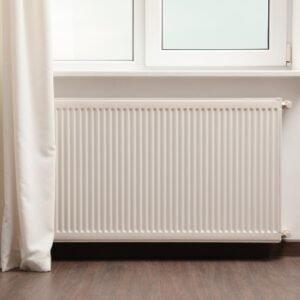10 Signs of Failing Radiators
A fully functioning HVAC system is critical for comfort. Your system’s radiator is a key player in this battle against the cold, ensuring your space remains warm and welcoming. However, a radiator, like any essential home appliance, needs regular maintenance to perform optimally. Neglecting signs of wear and trouble in your radiator can lead to inefficient heating, escalating energy costs, and expensive repairs down the line. This guide aims to arm you with knowledge about the tell-tale signs indicating your radiator needs attention or rescue. By spotting these early warnings, you can ensure your heating system operates efficiently, maintaining a cozy and warm environment throughout the colder months.
Understanding Radiators in HVAC Systems
A radiator is a crucial component of many HVAC (Heating, Ventilation, and Air Conditioning) systems, particularly those designed to provide hydronic heating solutions. These devices play a vital role in heating residential, commercial, and industrial spaces, utilizing hot water or steam to transfer heat efficiently throughout an environment. Here’s a deeper look into how radiators function within HVAC systems and the key factors that influence their performance.
How Radiators Work
Radiators operate based on the principle of heat transfer. In a typical setup, a boiler heats water, which then circulates through pipes to the radiators situated in different rooms. As hot water flows through the radiator, heat is emitted into the room through the metal surfaces of the radiator by a combination of convection and radiation:
- Convection occurs as heat is transferred to the air touching the radiator’s surface, causing this warm air to rise and circulate within the room.
- Radiation refers to the direct heat waves that emanate from the radiator, warming objects and surfaces in their path without heating the air in between.
This dual heat transfer method makes radiators highly efficient at distributing warmth.
Types
A radiator can vary widely in design, material, and operation. Some common types include:
- Cast Iron: Known for their traditional appearance and durability, cast iron radiators offer excellent heat retention but can take longer to heat up and cool down.
- Steel Panel: These are more modern and efficient, heating up and cooling down more quickly than cast iron. They are also lighter and often more affordable.
- Aluminum: Aluminum conducts heat very well, which makes these radiators quick to respond to changes in heating demand. They are lightweight and energy-efficient.
Installation and Configuration
Proper installation and configuration are key to maximizing the efficiency of a radiator. Factors to consider include:
- Placement: Radiators should be strategically placed to maximize heat distribution, often under windows or on external walls, where most heat loss occurs.
- Size and Output: The size of the radiator and its heat output should match the size and heating requirements of the room. An undersized radiator won’t heat a room adequately, while an oversized radiator will waste energy.
- Thermostatic Radiator Valves (TRVs): These allow for automatic adjustment of the flow of hot water to the radiator based on the room temperature, offering significant energy savings and improved comfort.
Maintenance Requirements
To ensure efficient operation, a radiator requires regular maintenance, including:
- Bleeding: This removes any air trapped in the radiator, which can prevent hot water from filling the entire radiator and reduce heating efficiency.
- Cleaning: Radiators accumulate dust and debris which can block the flow of air and reduce efficiency. Regular cleaning helps maintain optimal performance.
- Checking for Leaks and Corrosion: Over time, radiators can develop leaks or corrode, particularly at joints and valves. Regular inspections can help catch such issues early.
Efficiency and Sustainability
Modern radiators are designed to be more energy-efficient and environmentally friendly. Many newer models are compatible with renewable energy sources, such as solar-powered systems, further reducing the carbon footprint of heating systems.
Understanding the components and functionality of a radiator within your HVAC system is essential for maintaining an effective and efficient heating system. Regular maintenance and appropriate upgrades can help ensure that your radiator continues to provide comfortable and cost-effective heating for years to come.
Pros and Cons of Using Radiators in HVAC Systems
A radiator is a popular choice for heating in many residential and commercial settings, particularly where central heating is needed. While they offer several advantages, there are also some limitations to consider. Here’s a balanced look at the pros and cons of using radiators in HVAC systems.
Pros of Radiators
- Efficient Heating: Radiators are very effective at warming a room quickly and evenly. The combination of radiant heat and convection ensures that the heat is spread thoroughly throughout the space.
- Cost-Effective: Installation costs for radiator systems can be lower than other heating systems, especially in cases where ductwork would need to be installed from scratch. Radiators require only piping, which can be easier and cheaper to install in certain buildings.
- Design Flexibility: Modern radiators come in a variety of styles, sizes, and colors, making it easy to find an option that fits the aesthetics of any room. They can even serve as a decorative element.
- Individual Control: With the use of thermostatic radiator valves (TRVs), each radiator can be controlled independently. This allows for room-by-room temperature control, which can lead to energy savings and improved comfort.
- Durability and Longevity: Radiators, particularly those made of cast iron, are known for their durability and can last many decades with proper maintenance.
Cons of Radiators
- Space Requirements: Radiators can be bulky and take up valuable floor or wall space. In small rooms, this can be a significant inconvenience.
- Slow Response Time: Some types of radiators, especially cast iron, have a slower response time to changes in thermostat settings. It can take a while for them to heat up and cool down, which might not be ideal for rapidly changing weather conditions.
- Maintenance Needs: Radiators require regular maintenance, including bleeding to remove air and dusting to ensure efficient operation. Neglect can lead to reduced efficiency and performance issues.
- Potential for Leaks and Rust: Over time, radiators can develop leaks or rust, particularly at joints and valves. This requires monitoring and maintenance to avoid damage to the home and the heating system.
- Inconsistent Heating: If not properly installed or maintained, radiators can lead to inconsistent heating within a space. This includes cold spots in rooms, particularly with larger or poorly arranged spaces.
- Aesthetic Concerns: While there are modern designs available, some homeowners may find radiators less visually appealing than other heating options like underfloor heating, which is completely hidden.
Energy Efficiency Consideration
Modern advancements have made radiators more compatible with eco-friendly technologies, such as solar heating systems and high-efficiency boilers. This adaptability can mitigate some of the traditional drawbacks of radiators, such as slower heat distribution and higher energy use, making them a more appealing choice for eco-conscious consumers.
In conclusion, radiators in HVAC systems offer a robust and reliable heating solution that can be adapted to a wide range of settings and preferences. However, the choice to use radiators should be based on specific needs, space considerations, and personal preferences regarding maintenance and aesthetics.
1. Inconsistent Heating
One of the frequent issues encountered with radiators in HVAC systems is inconsistent heating. This problem manifests as uneven temperature distribution throughout a space, where some areas may feel significantly warmer or cooler than others. This inconsistency can be particularly troublesome in settings where uniform warmth is essential for comfort and energy efficiency.
Causes of Inconsistent Heating in Radiators
Several factors can contribute to inconsistent heating in radiators, including:
- Air Trapped in the System: Air can become trapped in radiators, preventing hot water from circulating properly. This results in cold spots within the radiator and reduces the overall efficiency of the heating system.
- Blocked Pipes or Radiators: Over time, radiators and the pipes feeding them can accumulate sludge and debris. This buildup can obstruct the flow of hot water, leading to uneven heating.
- Improper Balancing: Radiators need to be correctly balanced to ensure that hot water is distributed evenly across all radiators in a system. If some radiators heat up significantly faster than others, it may be an indication that the system is not balanced.
- Thermostatic Radiator Valves (TRVs): While TRVs offer control over individual radiators, if not used correctly, they can lead to uneven heating. For instance, a radiator in a less frequently used room might be turned down or off, which can affect the heating balance throughout the system.
Addressing Inconsistent Heating
To tackle inconsistent heating in radiators, consider the following measures:
- Regular Maintenance: Regularly bleeding radiators to release trapped air and cleaning them to remove internal buildup are essential maintenance tasks that help improve heat distribution.
- System Balancing: Have a professional HVAC technician balance the radiator system. This process involves adjusting the valves on each radiator to ensure an even distribution of hot water throughout the system.
- Upgrading Radiators or Valves: In some cases, installing new radiators or updating old valves, especially with adaptive and responsive TRV technology, can help achieve more consistent heating.
- Insulation and Draft Proofing: Improving the insulation of your home and sealing drafts can also help mitigate the effects of inconsistent heating by maintaining a more stable overall temperature.
2. Unusual Noises
Unusual noises emanating from radiators can be disconcerting and are often indicative of underlying issues within the HVAC system. These sounds can vary from gentle humming to loud banging, and understanding their causes is essential for maintaining the health and efficiency of your radiators.
Common Noises from Radiators and Their Causes
- Banging or Clanking: This noise typically occurs when steam radiators start up and shut down. In water-filled radiators, banging could also result from sudden changes in water flow or pressure within the radiator system, often caused by quick valve closures or the buildup of steam pockets in a system not fully purged of air.
- Gurgling or Hissing: These sounds are usually a sign of air trapped within the radiator. Air can prevent water from filling the radiator, which impacts its ability to heat up efficiently.
- Whistling: A whistling sound can occur when there is a slight opening that allows steam or water to escape under pressure, such as through an ill-fitting valve or a loose connection.
Addressing Noises in Radiators
To reduce or eliminate unusual noises from your radiators, consider the following steps:
- Bleeding Radiators: This is often the first remedy to try when you hear gurgling or hissing. Bleeding your radiators can release trapped air, allowing hot water to circulate properly.
- Checking and Securing Connections: Tighten any loose fittings and valves. This can help eliminate whistling and hissing sounds caused by escaping steam or water.
- Adjusting the Pressure: Sometimes, particularly in steam systems, adjusting the boiler’s pressure can reduce banging. Consult with a professional to ensure the system operates at the correct pressure.
- Flushing the System: Accumulated sludge and debris can cause noise and reduce heating efficiency. Flushing the system helps remove these contaminants and restores proper circulation and function.
- Professional Inspection: If the above steps do not resolve the noises, it might be time for a professional inspection. Some causes, like pipe expansion or water hammer, might require more complex adjustments or repairs.
3. Cold Spots on the Radiator
Cold spots on a radiator are a common issue that can significantly affect the efficiency and effectiveness of your heating system. Typically felt as unevenly distributed warmth, where parts of the radiator remain cool while others are hot, these cold spots can be a sign of internal problems that need addressing.
Causes of Cold Spots
- Air Trapped Inside the Radiator: Air can become trapped in the radiator as it displaces water, which should be heating the entire unit. This is one of the most common causes of cold spots, particularly at the top of the radiator.
- Sludge Buildup: Over time, radiators can accumulate sludge—a mixture of dirt, rust, and other debris. This sludge settles at the bottom of the radiator and can prevent hot water from circulating through the entire radiator, causing cold spots at the bottom.
- Improper Water Flow: If the water flow to the radiator is restricted, perhaps by a partially closed valve or a blocked pipe, it can result in insufficient heating and localized cold spots.
Solutions for Cold Spots on Radiators
- Bleeding the Radiator: This is often the first and simplest step to take. Bleeding your radiators involves opening a small valve at the top to let out trapped air, allowing the radiator to fill with water. This is generally done with a radiator key and should be performed carefully to avoid water spills.
- Flushing the Radiator: If bleeding doesn’t resolve the cold spots, particularly those at the bottom, flushing the radiator may be necessary. Flushing involves removing all water and accumulated sludge from inside the radiator. This process usually requires disconnection of the radiator and should ideally be done by a professional.
- Checking and Adjusting Valves: Ensure that all valves, particularly the lockshield and thermostatic radiator valves (TRVs), are fully open and functioning correctly. Sometimes valves can get stuck or may not open fully, restricting water flow.
- Inspecting for Blockages: If certain radiators continue to have cold spots even after bleeding and flushing, there might be a blockage in the pipes leading to the radiator. This could require a system-wide check for any obstructions or a professional power flush of the entire system.
- Balancing the Heating System: In systems with multiple radiators, ensuring that each radiator receives the right amount of hot water is crucial. Balancing the system involves adjusting the valves on each radiator to ensure an even distribution of heat across all units.
4. Leaks Around the Radiator
Water spots or damp flooring around your radiators can signal leaks. Leaks are not only wasteful and potentially damaging to your property but also reduce the pressure in your system, leading to inefficiency. It’s essential to address leaks quickly to prevent further damage and restore proper function.
5. High Heating Bills
An unexpected rise in heating bills can often be traced back to inefficient system performance. If your radiators are struggling due to any of the aforementioned issues, your system will have to work harder to heat your home, thus using more energy and increasing your bills.
6. Radiator Takes Long to Heat Up
If your radiator takes longer than usual to warm up, this could be a sign of circulation problems. This delay can be due to various issues, including a failing pump, blocked pipes, or an incorrectly sized radiator for the space it’s intended to heat.
7. Visual Signs of Rust and Corrosion
Inspect your radiators regularly for any signs of rust or corrosion. These are not only unsightly but can also lead to serious problems like leaks or inefficiencies in heat distribution. Rust and corrosion are signs that the radiator material is degrading and may need replacing.
8. Thermostat Inaccuracy
If your thermostat settings do not match the actual temperatures in your home, it could be due to a failing radiator. This discrepancy often arises when the radiator is unable to meet the heating demands set by the thermostat, indicating inefficiency or a malfunction within the system.
9. Frequent Need for Bleeding
Radiators need bleeding when trapped air prevents hot water from filling every part of the radiator. If you find yourself needing to bleed your radiators frequently, it suggests there is a persistent issue within your heating system that needs to be addressed.
10. Age and Obsolescence
Like all mechanical systems, the radiator has a lifespan. If your radiator is over 15-20 years old, it may be time to consider replacing it. An old radiator often becomes inefficient and may not perform as well as newer models designed with the latest technology for energy efficiency.
Is Your Heater Helping or Hindering? Signs Your Radiators Need Rescuing by The AC Therapist
Recognizing the signs that your radiator needs rescuing is not just about ensuring comfort in your home; it’s about maintaining efficiency and prolonging the life of your HVAC system. From unusual noises and inconsistent heating to cold spots and high energy bills, each sign is a call to action. At The AC Therapist, we understand the importance of a fully functional heating system. Our team is dedicated to providing expert solutions, from maintenance checks to comprehensive repairs, ensuring your radiators perform optimally. Don’t let minor issues turn into major problems. Reach out to us today, and let The AC Therapist restore warmth and efficiency to your space, ensuring your radiator is not just heating, but helping your home.













